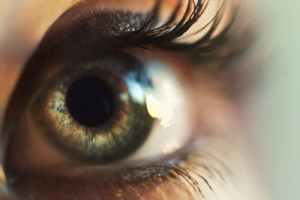Congenital achromatopsia, also known as cone dystrophy, is a rare non-progressive inborn hereditary visual disorder. It is characterised by complete or incomplete colour blindness, extreme light sensitivity and very low visual acuity.
According to some estimates carried out in the United States, it affects 1 person in 33.000. Thus, on the basis of these data, it is calculated that there are approximately 2.000 people suffering from achromatopsia in Italy.
In a normal-eye retina there are two different types of light-sensitive cells (the so-called photoreceptors): cones and rods.
Cones (about 6 millions) are mostly located in the centre of the retina, in the so-called macula region and they are suitable for daylight vision: they allow the eye to adapt to light, to perceive colours and to recognise small details.
Rods (about 100 millions) are located mainly at the periphery of the retina and they are specialised in night vision: rods are more sensitive to light compared to cones, but they “saturate” at higher levels of illumination and they do not provide colour vision or good detail vision.
In normal eyes, rods and cones complement each other and allow people to see in every kind of light conditions.
In the retina of people affected by achromatopsia (achromats), instead, cones are partially or completely not working, therefore, these people must rely on their rod vision. As a consequence, they are either totally or almost totally colourblind, they have poor visual acuity and their eyes are not able to normally adapt to a more intense light than at dusk.
The severity of these manifestations among individual achromats varies a lot.
Visual acuity
Since cones are concentrated in the macular area of the retina, they are responsible for central vision. A flaw in the cone system leads to a reduced visual acuity, which cannot be corrected with conventional glasses.
The near vision is generally less affected than the far vision.
Average visual acuity of people suffering from achromatopsia measured by standard tables varies around 1/20. Achromats also show a wide range of refractive errors of the eye, ranging from extreme myopia to extreme presbyopia. Many people also show a significant astigmatism, higher than in the rest of the population.
Symptoms and signs
In order to diagnose achromatopsia, specialists search for the following symptoms and signs while performing an eye examination:
- low visual acuity (poor detail vision from afar);
- nistagmus (involuntary movement of the eyes);
- photophobia (light aversion);
- low or no perception of colours;
- normal or almost normal fundus (rear part of the eye);
- stable conditions (inborn and non-progressive);
- Abnormal or absent photopic ERG (which measures the electrical response of eye activity in a light condition suitable for normal cone functioning).
Nistagmus varies according to
- distance: it increases while trying to bring something into focus by afar;
- illumination level: it diminishes in the dark while it increases with intense illumination;
- fixation: it worsens when people make an effort to see something;
- age: nistagmus is usually more noticeable during childhood and early adolescence and it tends to diminish with age.
Aids and strategies
Since they do not have a cone system that works normally, people affected by achromatopsia have to use coloured filtering lenses and various other strategies to adapt to higher illumination levels than at dusk. Their sight decreases with increasing illumination, which may create considerable tension on a psychological level.
Achromats’ sight varies significantly and continuously to any changes in light conditions: depending on how much light there is, what kind of light, from which direction it comes from and from other factors, achromats can feel as people with a normal sight at a given time (at dusk and in the dark), as people with limited vision, and, eventually, as completely blinded people in the light, that is, they cannot see in the day-light.
For this reason, achromats often wear a peaked cap, they prefer indoor environments, they wear glasses with wraparound frames and lenses with selective filtering.
At school and at the work place, special care is required to avoid strong illumination – even if artificial – and shiny or reflective surfaces. Curtains on the windows, magnifying or monocular lenses, video magnifiers, personal computers, cameras with displays, etc. generally do not cause any problem.
From an early age, many achromats often squint their eyes to adjust the amount of light that enters into the retina and this activity is highly variable in different conditions. Often these attitudes and strategies can lead to discomfort from the psychological point of view in relation to social inclusion.

One thought on “What is achromatopsia?”
Comments are closed.